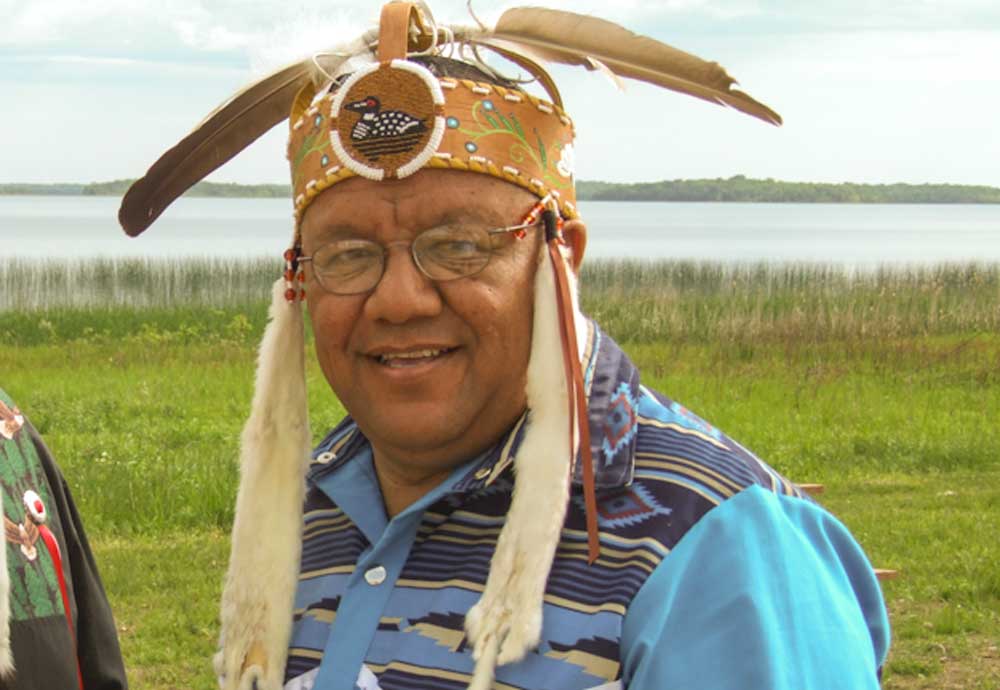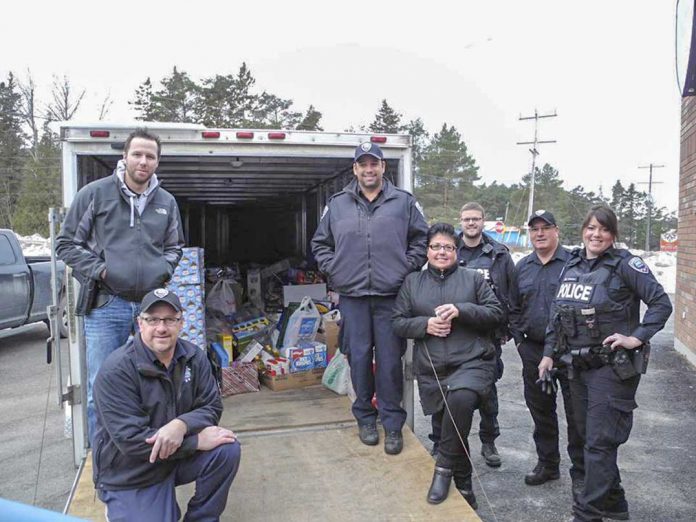M’CHIGEENG—Following on the suggestion of Anishinabek Nation Grand Council Chief Glen Hare, the Great Lakes and St. Lawrence Water Resources Council will be establishing a friendship treaty, and will be meeting more often.
“The chair of the committee got back to one of my staff members and indicated they think the idea of signing a friendship treaty between all the mayors from the Great Lakes and St. Lawrence Cities Initiative and Anishinabek Nation leadership would be awesome,” Grand Council Chief Hare told The Recorder last week.
As was reported in last week’s edition of The Recorder, for the first time, Canada and United States mayors from the Great Lakes and St. Lawrence Cities Initiative and Anishinabek Nation leadership joined together to call for stricter rules for any new water withdrawals from the Great Lakes and St. Lawrence. More specifically, they are asking the Great Lakes and St. Lawrence Water Resources Council (Compact Council) and Regional Body to reconsider and defer the adoption of proposed changes to the procedures for reviewing requests for water withdrawals.
“Today, the Anishinabek Nation leadership is seeking to ensure that the Great Lakes and the St. Lawrence River are subject to stronger rules and improved accommodation and recognition of Anishinabek inherent rights, aboriginal and treaty rights where there is an interest within the scope of the Compact Council and Regional Body on water withdrawal. Water is the lifeblood of Mother Earth—we must do what we can to protect it,” stated Anishinabek Nation Grand Council Chief Glen Hare.
“The mayors in the Great Lakes St. Lawrence region demand stronger rules on new water withdrawals and the Compact Council’s proposed revisions need to be improved,” said Collingwood Mayor Sandra Cooper, chair of the Great Lakes and St. Lawrence Cities Initiative.
The mayors and the Anishinabek Nation share two main concerns regarding the proposed procedures for reviewing diversion requests. The concerns are, firstly, the procedures should allow for increased stakeholder participation and information sharing during the review process; however, this is not the case with the new proposed rules. For example, the proposed rules do not require sufficient public participation in each of the areas of the Great Lakes-St. Lawrence region, thereby not allowing all voices to be heard; and second, the proposed procedures fail to correct many of the weaknesses in the Compact Council’s ability to properly review and enforce diversion requests. For example, the proposed procedures do not explicitly acknowledge the role that the Compact Council must play in helping to monitor and enforce an applicant’s compliance with a diversion request once the request has been approved.
There are other deficiencies in the proposed procedures that the mayors, the Anishinabek Nation and other stakeholders have also noted.
At the recent meeting, Grand Council Chief Hare made a couple of recommendations, one being that all leadership on the Great Lakes should be meeting at least once a year before they have to look at taking issues to court. He also suggested the signing of a friendship treaty between First Nations and municipalities, similar to the one signed in the 1990s for Manitoulin, (the latter) which he also thinks needs to be updated and signed again.
Grand Council Chief Hare said, “the friendship treaty will be in both languages, and at some point after it is written it will be officially endorsed. And even if we meet once a year, it would be a very positive step. We are going to go forward on the step of the friendship treaty being developed and how it will look for both of us.”
The idea of the friendship treaty, “has been accepted very positively. Going to the next step, and looking forward to it; it’s all about communication between leadership,” added Grand Council Chief Hare.





